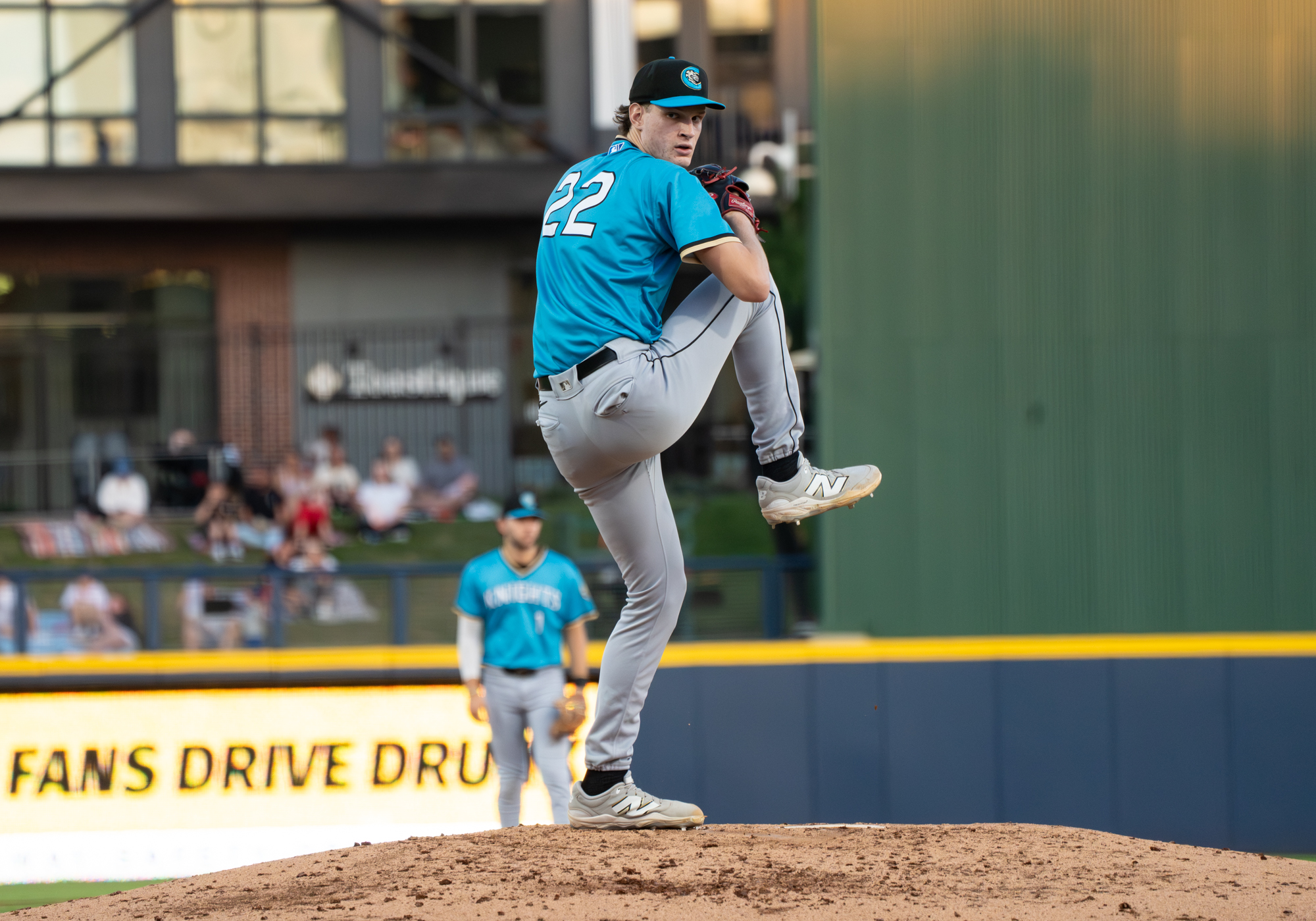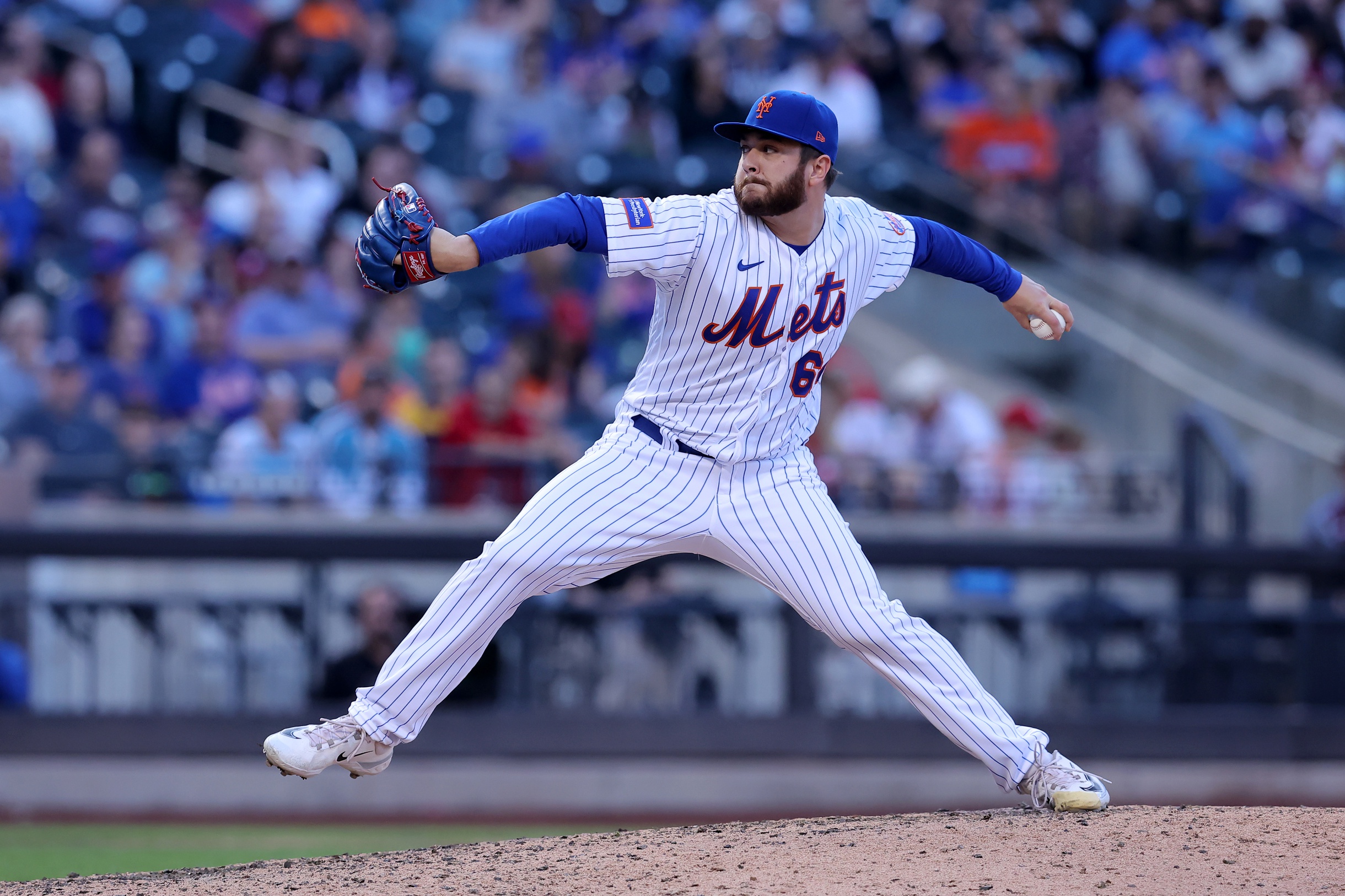Fresh off being minted as the best left-handed pitching prospect in the game in spring, Noah Schultz's stuff seemed to take a step back in 2025.
His strikeout rate -- disregarding the mid-year level jumps contained in both seasons -- dropped almost 9 percentage points from 2024. His walk rate, a consistent bastion of strength at earlier points where a 6-foot-10 starting pitcher seemed less plausible, more than doubled. This audience here probably understands that persistent patellar tendinitis is vital context to Schultz's Triple-A results and entire 2025 season, but some poor ignorant soul will click on his Baseball-Reference.com tab this winter and see a 9.37 ERA in five outings, and wonder what the big deal is.
"Something I’ve been dealing with all year," Schultz said of his right knee. "It would have times where it would flare up and then go down. The training staffs in Double-A and Triple-A were great with it, great with helping me get out on the field and compete as often as I could."
Schultz was limited to 73 innings by his troubled knee, which also canceled his plans to pitch in the Arizona Fall League. But with how lack of prior workload has led the organization to limit his usage in the past, and Chris Getz openly talking about Schultz being expected to contribute to the majors in 2026, the left-hander is more thankful just to have gotten in that many, since the knee has long bedeviled his 2025 performance.
And it's really bedeviled, because a lot of what happens in a pitching delivery is keyed when the lead leg lands and plants, and Schultz's struggles offered a lot of worrying developments that were perplexing until the 22-year-old was more forthcoming about the unifying explanation.
"Until he really started letting us know the knee was bugging him, we were seeing a lot more falling off toward third base in his delivery, and it was really him avoiding impact and load on his knee," said senior advisor to pitching Brian Bannister. "We don't want him getting too linear. If you see the ground ball percentage starting to go down or the BABIP spiking, he's not able to get the steeper approach angles in the zone and the late movement that defined him early in his pro career. So we're not losing that sight of that, but first and foremost he's got to feel good, and trust it so he can stay through the ball."
Schultz insists his knee is feeling better and that he feels well-positioned to have a normal offseason, ahead of an auto-invite to major league camp that figures to offer him a real chance to perform his way onto the roster. But if the instability in his delivery is the root cause behind variance in his strike-throwing, approach angles, pitch shapes, vibes, etc., what did we learn from this season?
Not to do it again? Sure, but even beyond the normal unpredictability of injuries, an abnormal trajectory is sort of the cost of drafting the big physical outlier prospect out of Oswego.
"He's still young, he's still growing," Bannister said. "He added more inches. He's an extra-tall pitcher. Sometimes, those extra-tall pitchers have slightly longer timelines as they're still growing, and they have longer limbs to deal with."
For Schultz, who is very young but has been around long enough to have accumulated plenty of past frustrations of being sidelined by ailments, and then rate-limited upon return, getting the chance to labor through something was its own reward.
"It was really important for me to get through some of that stuff," Schultz said. "There were a lot of good things that I was happy I had to work through. There were a lot of things, I don’t want to say were thrown at me, but a lot of things I was kind of adapting to. Just challenging myself every single week. That’s something that was the plan. The plan was to learn and grow as a player, and I think that's the only way you do that."
And for a pitcher whose maturation into a top-of-the-rotation mainstay is vital for any White Sox contention dreams, developing frontline mettle is going to be at least as important as his fourth pitch. But also, he felt like repping his fourth pitch was one of those hidden benefits of soldiering through.
"It had taken me some time to get used to throwing it and being able to adapt to it and change it a little bit throughout the year to be a little bit more effective," Schultz said of his changeup, which will be important for combatting the .890 OPS righties managed against him in 2025. "It makes me happy to know that I’m able to change some stuff in-season if I need to for the future."
"It got a little harder a little bit, less movement, but I can control it a lot better. It's something that I know in the long run, it'll be super effective against right-handed hitters."
Schultz has lauded his respect for Bannister (and vice versa), giving their answers a sense of mutual agreement. They both agree his cutter will have a place in his future arsenal, after it was outed as an accelerant to bad habits in his delivery, but deferred the question of what form it will take to more of a spring training project. Schultz concurred with a past Bannister projection that he will sprinkle in more four-seamers, even if his description of his buy-in of the plan is a fun inversion of how pitchers would have spoken even five years ago.
"Metrically, it’s not my best pitch, my four-seam, but I guess in the times I’ve thrown it, it’s had good results," Schultz said.
Mapping out ideal pitch mixes and performances are the classic pastime of the offseason, and then the season starts and pitchers have to work with what they actually have. Schultz feels like he went through that in 2025, so the smatterings of success he was able to have stand out as meaningful triumphs.
"Being able to piece together stuff like that, and point out what made those outings successful for the future is something that’s important to know," Schultz said. "What made those work in that game, and be able to combine them all to become the best version of myself."






